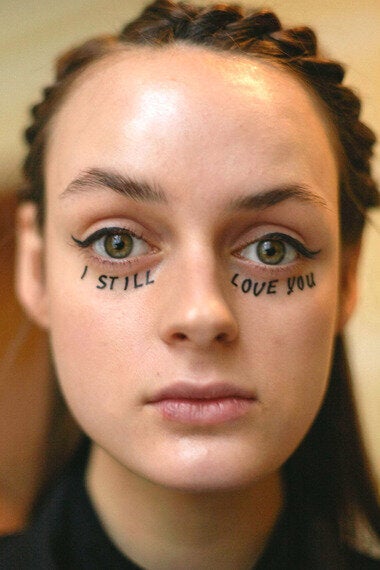
Sabinna SS17 backstage - Photo: Marija Vainilaviciute
For Sabinna Rachimova, her 'brand DNA' is, actually, familial. It transcends ethos and aesthetics and runs deep into the past, through two generations of her family. Her grandmother, a maths and physics professor in her native Russia, who during communist times made clothing on the side for neighbours and friends for extra income, inspired her to pursue a career in art and craft.
Sabinna's parents were professional athletes, her mother a field hockey player and her father a footballer, which meant the family travelled regularly and she grew up in Russia, Spain and Austria, where her family finally settled. Describing this experience as unsettling, she created her own fictional world of play to distract herself from being the new kid and not speaking the local language, at least initially. Craft became Sabinna's passion, so where communication with others lacked, she filled her time with what interested her - art, craft and languages.
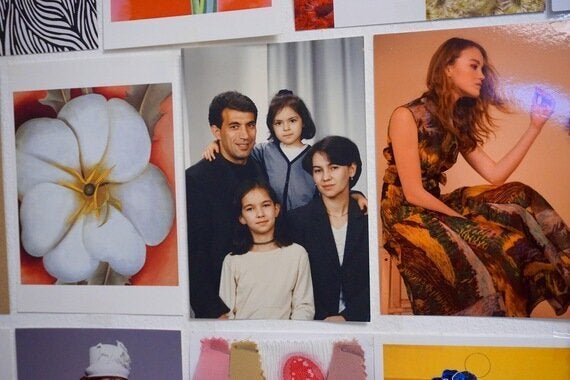
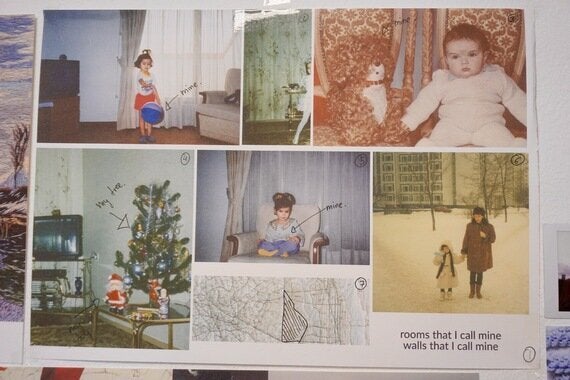
Family photos, Sabinna's studio, East London
Sabinna's parents insisted she attend a languages and maths-focused high school, so unable to pursue creative subjects, she completed her studies under duress and then went on to enrol in a Slavic languages degree after a rejection from the University of Applied Arts Vienna, where she had hoped to study fashion design. Struggling to find a route into a design degree, she sent her CV to every fashion designer in Vienna, asking for a part-time job and hoping to step inside what she described at the time as the 'secret world of fashion'.
Schella Kann took her on and with a tough love approach, telling her to forget about the rejection from the University of Applied Arts Vienna and to look further afield to pursue her dreams. By putting together a portfolio based on the way her maths and physics professor grandmother had taught her to present ideas, she applied and was accepted onto a foundation course at Central Saint Martins in London. Not bad for someone who pulled together a portfolio in twenty four hours, assisted by her boyfriend and now long term partner, David, and sent it simply addressed to the 'fashion' department with a request to join a fashion course, of no particular specification.
Following completion of her foundation course, Sabinna went on to study Fashion Marketing and Design at CSM and interned in the knitwear department at Dior, which she describes as 'the best and worst' (experience). She describes spending up to two days pondering yarn colours alongside the knitwear team, and working with Italian factories who would bring cases full of ideas into the ready-to-wear team's studio for the knitwear team to use as inspiration from which to develop the seasonal designs. Sabinna describes gaining an insight into the technical aspects of knitwear development and production with the scale of a luxury fashion house and this knowledge has clearly stood her in good stead for developing her own fashion business.
Describing herself as "terrible at maths but very good with numbers", she explains to me how her business, which she launched eighteen months ago, works on a day-to-day basis, with the SABINNA team, consisting of herself and her partner David, co-founders and leading the design and IT and e-commerce respectively; Zula, Sabinna's mum, who is head of knitwear, which is made in Vienna, Austria; Scarlett, a long-term friend of Sabinna and pattern cutter, who develops the designs alongside Sabinna and is based in Hastings; David's sister Simone, who is in charge of taxes; Julia, who is based in Vienna and does research and marketing; and Asya, who creates the crochet pieces and assists Sabinna in London.
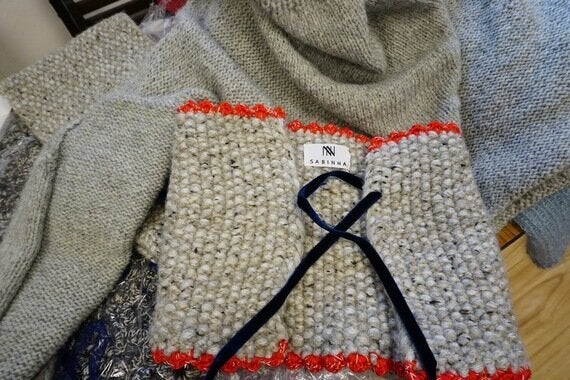

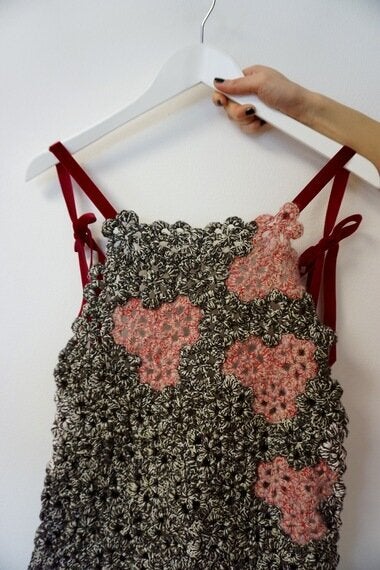
Sabinna's studio
All of Sabinna's fabrics are from Europe and all the ready-to-wear, custom made pieces for private clients, crochet pieces and bags are made in the UK. All of the knitwear is made in Austria.
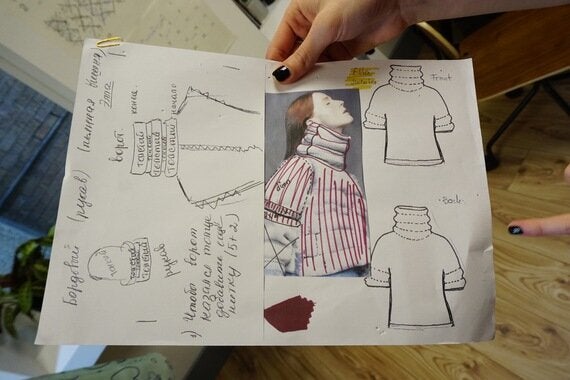
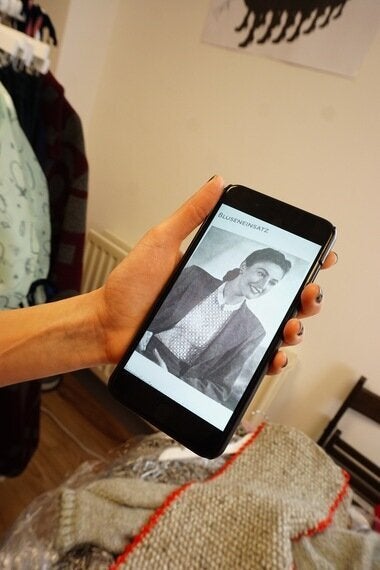
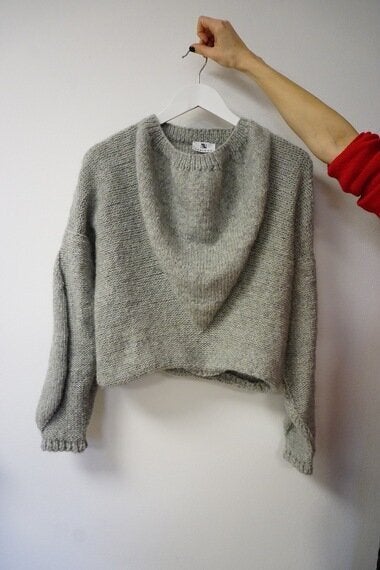
Zula's knitwear design notes, inspiration and hand-knitted jumper at Sabinna's studio, East London
Having seen behind the scenes at Sabinna's studio, I am eager to delve a little deeper into this season's collection, show and mixed-reality presentation. Having attended Sabinna's catwalk show and seen the collection up close, I'm curious to know what prompted Sabinna to delve into using the Hololens and working with a mixed reality platform to present her collection virtually after having just presented it in catwalk reality. When I ask how the fashion-tech collaboration came about, we spent some time talking about notions of innovation in fashion and the idea of 'newness'.
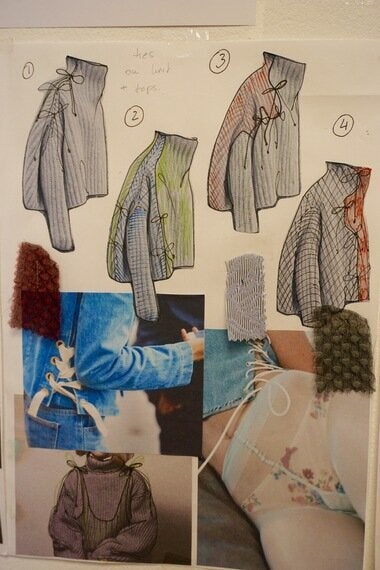
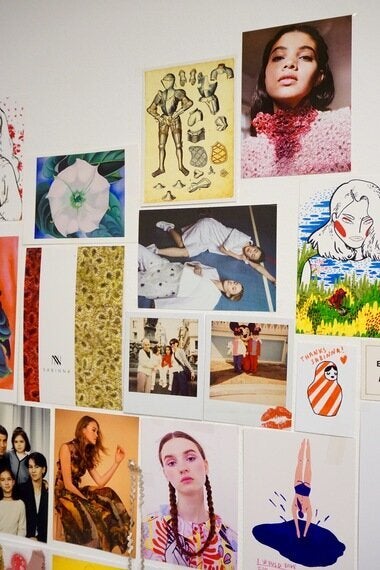
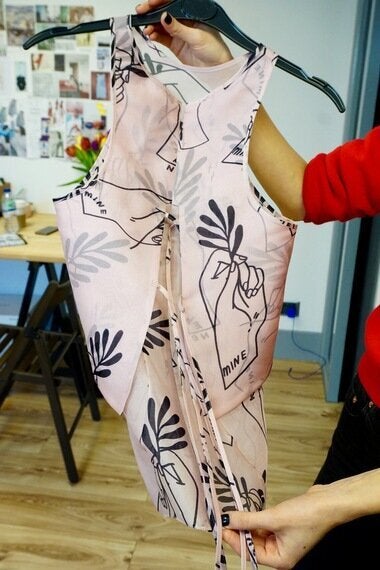
Sabinna's studio
Fashion is highly resistant to change. I have mentioned this paradox a number of times in my articles. Sabinna puts it clearly, "the main problem with fashion is that it doesn't communicate well with the outside world... Social media has divided fashion along commercial lines". She feels there is too much made of creative/experimental fashion versus commercial fashion, especially in London, and that designers are often placed in one box or the other. Describing her collections as very wearable and leaning towards the commercial side, she sees the opportunity for innovation and creativity in presentation and storytelling, with Microsoft Hololens and collaborator Pictofit being the perfect collaborators for this, facilitated by the FIA and Fashion Scout.
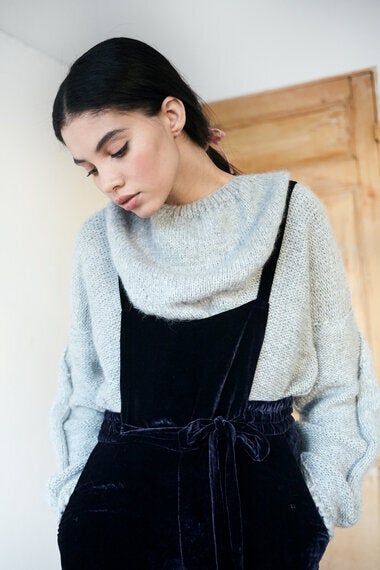
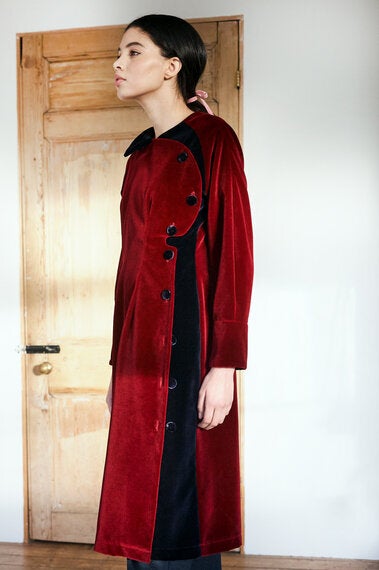
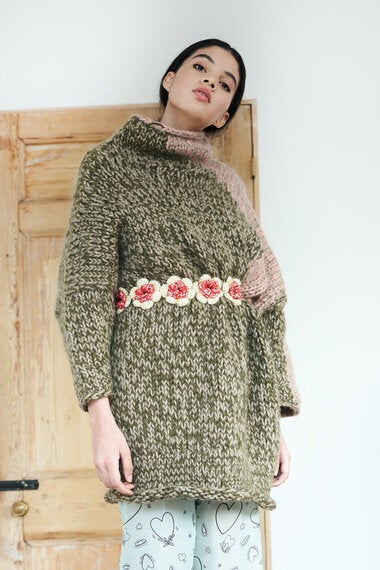
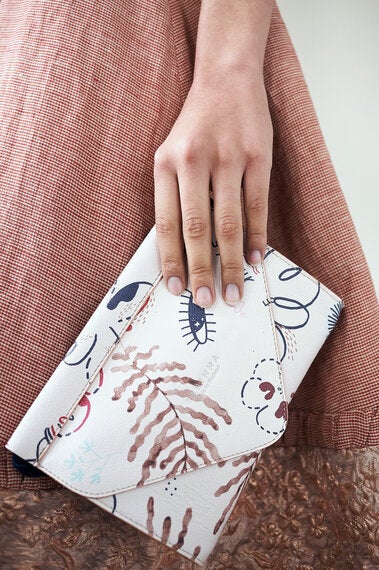
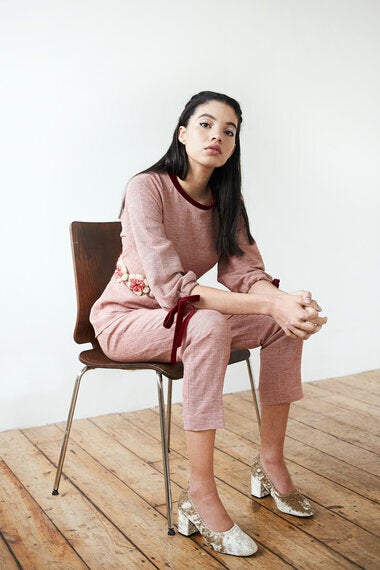
SABINNA SS17, I Still Love You - Photos and Styling: Toni Caroline
Sabinna follows what's widely termed as the 'see now, buy now' business model, which means her collections are produced in advance of her show and ready to buy immediately after they are presented, allowing her to capitalise on the buzz of London Fashion Week and engage her clients in a complete presentation and shopping experience.
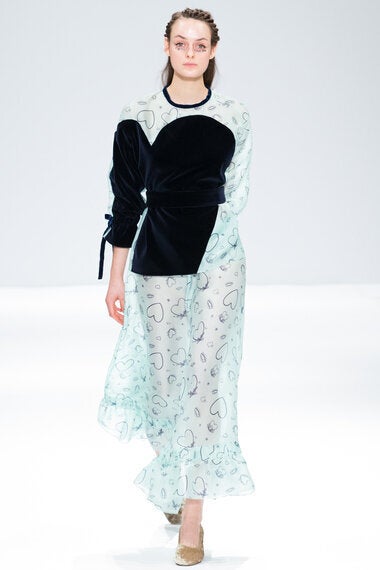
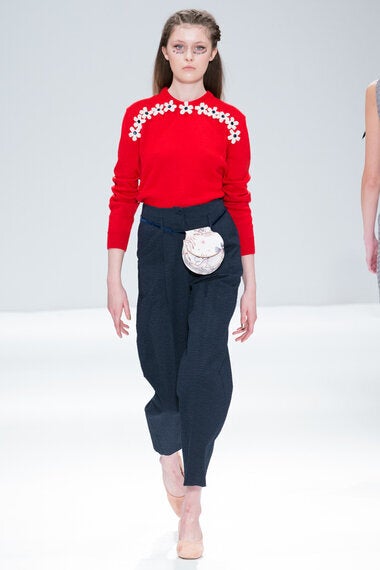
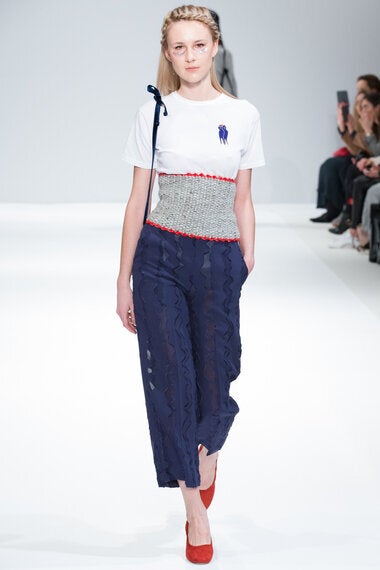
SABINNA SS17 show, Fashion Scout, London Fashion Week - Photos: Sabinna
Setting the tone for seasons to come, where Sabinna plans to continue experimenting with technology to create new experiences rather than attempting to constantly re-invent her products, Sabinna chose to create the world's first mixed-reality shopping event at the Freemason's Hall as part of Fashion scout during London Fashion Week, following her catwalk show.
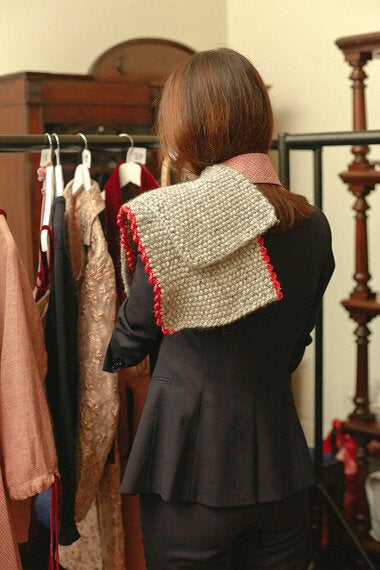
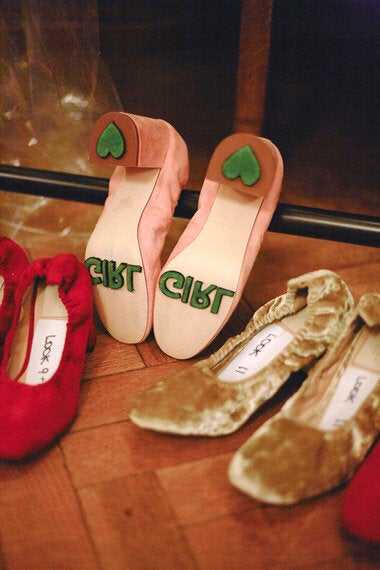
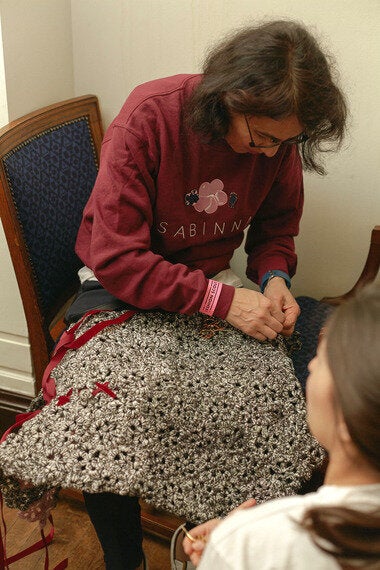
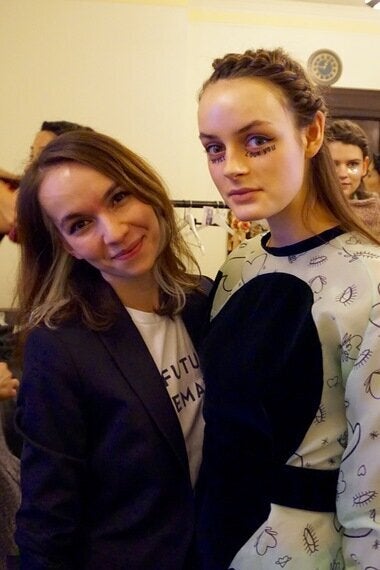
Behind the scenes at SABINNA SS17 show, Fashion Scout, London Fashion Week - Photos: Marija Vainilaviciute, bottom photo: Techstyler
Why mixed reality shopping? With her collection available, she thought it would make sense to give the customer a creative tool to explore styling different pieces of the collection virtually before purchasing.
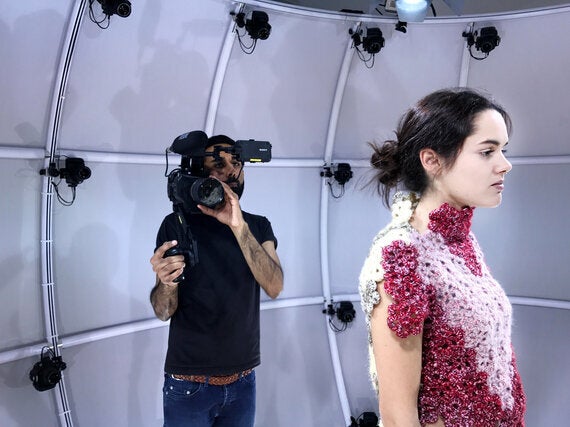
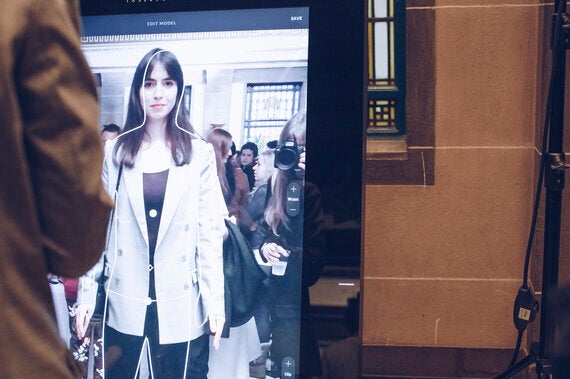
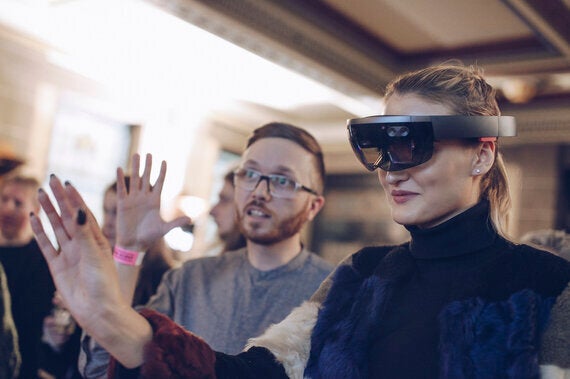
Top: Image capture by Pictofit in Austria, Bottom: Sabinna's mixed-reality shopping experience at Fashion Scout, LFW - Photos by Emmi Hyyppä and Sabinna
There was also an app available to download, allowing shoppers to use the Pictofit virtual fitting room and, instead of looking at virtual mannequins, try on the SABINNA collection, entitled I still love you, on images of themselves. The clothes adapt to the user's body shape in real time.
With a huge ambition for trying new technologies and exploring the potential of virtual and augmented reality, Sabinna passionately emphasises that designers need to experiment with new technologies in order to discover newness. Sometimes something new is right in front of you, but you don't see it because you are striving to re-invent something that may not need re-inventing, she says. Newness can come in the form of simply working with a new piece of technology, while sticking to the same core aesthetics, materials and designs in terms of product. For her, technology is the catalyst and an exciting tool for telling new stories in fashion, she states, mentioning the huge leaps in the technology's image capture and render quality in just the six months since Martine Jarlgaard's mixed reality fashion presentation at London Fashion Week in September 2016. Let's see what next season brings.
All photos by Techstyler unless otherwise credited
First published on Techstyler.fashion
